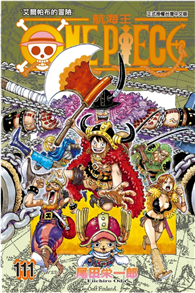Known throughout the service by his nickname "Jig Dog," this officer takes great pride in his achievements in combat. He liked to go where the action was, and in this memoir he is frequently candid to the point of bluntness in expression his feelings. After graduation from the Naval Academy in 1939, he served in the aircraft carrier USS Enterprise (CV-6) and later returned to that ship after undergoing flight training brief duty in the heavy cruiser USS Salt Lake City (CA-25). He was in a number of combat actions during the war, notably the Battle of the Philippine Sea in 1944. He served as CO of Bombing Squadron 98, as a student at the Naval War College, as navigator of the escort carrier USS Bairoko (CVE-115), and on the staff of ComAirPac. In the 1950s he was with the Armed Forces Special Weapons Project, commanded Carrier Air Group 19 and Fleet Composite Squadron Three, served in the Pentagon in OP-05W, was a student at the National War College, and commanded Heavy Attack Wing One as the Navy built up its nuclear bombing capability. In the early 1960s Ramage commanded the seaplane tender USS Salisbury Sound (AV-13), served as head of Special Weapons Plans on the OpNav staff, commanded the attack aircraft carrier USS Independence (CVA-62), served on the staff of Joint Task Force Two, which tested low-altitude bombing alternatives, and was chief of staff to Commander Task Force 77 during the bombing of North Vietnam. As a flag officer he was Commander Fleet Air Whidbey, deputy chief of staff for plans and operations on the staff of CinCPacFlt, Commander Carrier Division Seven, Commander Naval Air Reserve, and Commander Tenth Naval District/Caribbean Sea Frontier. He retired from active duty in 1975.
| FindBook |
有 1 項符合
Reminiscences of Rear Adm. James D. Ramage, USN (Ret.)的圖書 |
 |
Reminiscences of Rear Adm. James D. Ramage, USN (Ret.) 作者:Ramage 出版社:US Naval Institute Press 出版日期:1986-07-15 語言:英文 規格:精裝 / 440頁 / 27.94 x 21.59 x 2.54 cm / 普通級/ 初版 |
| 圖書館借閱 |
| 國家圖書館 | 全國圖書書目資訊網 | 國立公共資訊圖書館 | 電子書服務平台 | MetaCat 跨館整合查詢 |
| 臺北市立圖書館 | 新北市立圖書館 | 基隆市公共圖書館 | 桃園市立圖書館 | 新竹縣公共圖書館 |
| 苗栗縣立圖書館 | 臺中市立圖書館 | 彰化縣公共圖書館 | 南投縣文化局 | 雲林縣公共圖書館 |
| 嘉義縣圖書館 | 臺南市立圖書館 | 高雄市立圖書館 | 屏東縣公共圖書館 | 宜蘭縣公共圖書館 |
| 花蓮縣文化局 | 臺東縣文化處 |
|
|
圖書介紹 - 資料來源:博客來 評分:
圖書名稱:Reminiscences of Rear Adm. James D. Ramage, USN (Ret.)
|










